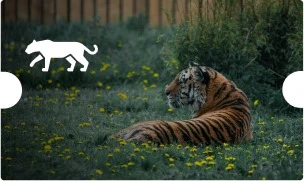Flora
Jim Corbett National Park showcases a rich diversity of plant life across its expansive terrain. The park's prominent Sal forests (Shorea robusta) form dense canopies, complemented by mixed deciduous forests featuring species such as Khair (Acacia catechu), Sissoo (Dalbergia sissoo), Ber (Ziziphus mauritiana), Mahua (Madhuca longifolia), Kachnar (Bauhinia variegata), and Bamboo (Dendrocalamus strictus). Along the riverbanks, a variety of grasses, shrubs, and towering trees like Jamun (Syzygium cumini), Jackfruit (Artocarpus heterophyllus), and Indian Rosewood (Dalbergia latifolia) thrive, enhancing the park's ecological diversity. The open grasslands known as Chaurs provide essential grazing grounds for herbivores, interspersed with patches of forest that contribute to the park's vibrant ecosystem, supporting numerous wildlife species.
Fauna
Jim Corbett National Park's fauna is rich and diverse, attracting wildlife enthusiasts worldwide. The park is renowned for its Bengal tigers and leopards, often seen in the hilly regions. Asian elephants are common in the Dhikala zone, while Himalayan black bears occasionally roam higher altitudes. Various deer species, including Sambar, Spotted Deer, Barking Deer, and Hog Deer, inhabit the park, along with wild boars, Indian grey mongooses, and otters. Birdwatchers can enjoy over 600 bird species, such as the Crested Serpent Eagle and Great Hornbill. Reptiles like crocodiles, gharials, Indian pythons, and King Cobras add to the biodiversity, while the Ramganga River supports aquatic life like Golden Mahseer and Goonch.











